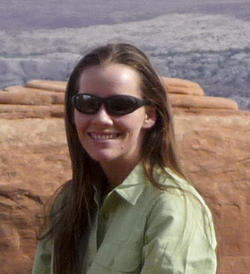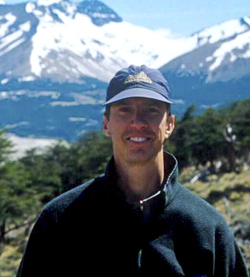
But in recent years, an increasing number of people are using the devices for non-emergencies – alerting authorities for water that’s too salty, or making an emergency call for a snoring partner – according to a recent research paper written by HSU graduate student Kristen Pope (’11, Natural Resources) and Professor Steve Martin.
Published in the August issue of the International Journal of Wilderness, the peer-reviewed article examines public perceptions of personal locator beacons, the false sense of security they can provide and the repercussions for land use managers and the public.
“Devices like personal locator beacons are fantastic when used properly because they really reduce the challenges associated with doing search and rescue,” says Martin, who is chair of Department of Environmental Science and Management. “But some people are using them as an inappropriate substitute for experience, skill and good judgment.”

Pope and Martin’s field research focused on public perceptions of technology use. They surveyed 235 visitors to California’s King Range Wilderness area in 2009 and found that 55 percent of respondents were what the authors called “pro-technology.” These people were more likely to take risks, to feel safer, and to use a satellite-linked emergency device to request a rescue than the remaining “anti-technology” respondents, many of whom were more experienced, had personal experience with a life-threatening wilderness situation, and believed that technology should never take the place of skill, experience and knowledge.
Since hitting the market in 2003, personal locator beacons have skyrocketed in popularity among hikers, campers and other outdoor enthusiasts. The popular SPOT brand, which sells for about $100, offers three signaling options: “OK,” “Help,” and “911,” which alerts emergency federal or county responders to the user’s location.
As the devices have become more mainstream, so too have the number of false alarms, Martin says.
Take the 2009 case of two men and their teenage sons hiking Grand Canyon’s Royal Arch Loop who activated their beacon three times in three days. The first time, they had run out of water. But by the time rescuers arrived the next morning after braving a dangerous helicopter ride, the group had already found water and refused help. That night, they signaled an emergency again. This time, rescuers used a night-vision enabled helicopter to reach the group and found that their water tasted too salty. The third and final time, rescuers required that the group evacuate, citing one man for “creating a hazardous condition.”
Besides creating a “boy who cried wolf” scenario, land use managers are concerned with the unnecessary burden that false alarms place on search and recue teams, Martin says.
Search and rescue missions are typically a publicly funded service coordinated by either the National Park Service or the U.S. Coast Guard. Due to the remote nature of most rescues, missions are often costly and dangerous.
“It’s not like you’re not talking about sending an ambulance down the road,” Martin says. “You’re talking about sending a helicopter twenty to thirty miles into the middle of nowhere.”
As technology improves, it remains to be seen whether public use of personal locator beacons will improve, Martin says.
“When used properly, personal locator beacons are invaluable,” Martin says. “The problem is when they're used as the first option, rather than the last option.”